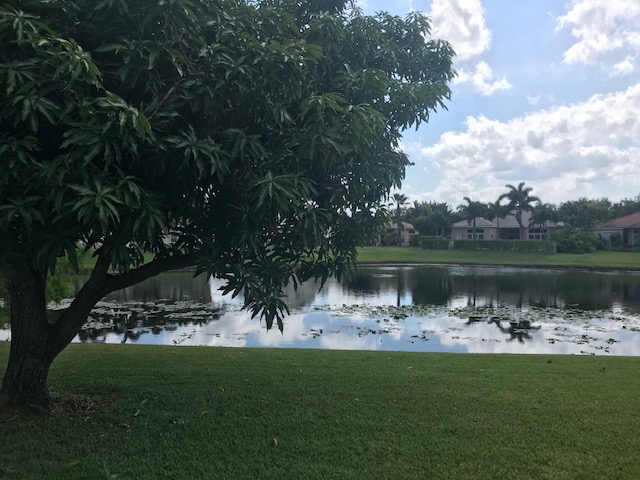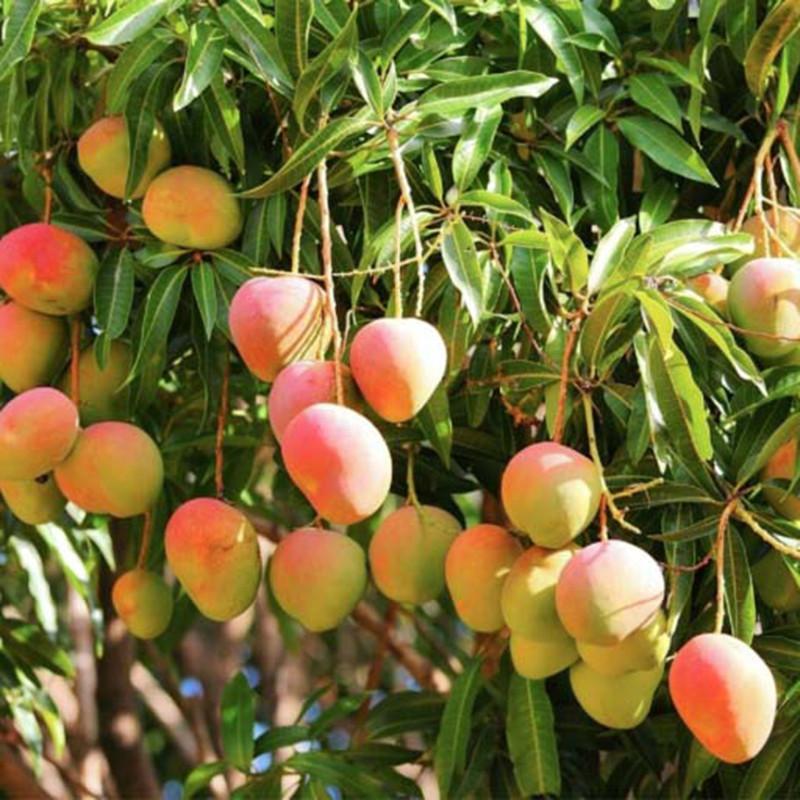Plant a Tree for a Mango State-of-Mind
By Tripp and Carmen Eldridge
Are you a mango lover? Planting your own tree is easier than you think. These gorgeous tropical fruit trees produce mangoes in about five years, so if you have spot in your yard, get your shovel and get started on a fruity new adventure.
When it comes to tropical fruit, Florida is a grower’s fantasyland, and if you want to grow the king of fruits, there are many varieties to consider. Sweet, delicious, and sinfully juicy, the mango’s tantalizing flesh is the stuff of growers’ dreams. Backyard tree farmers love to compare notes on tree blooms, fruit yields, and fruit quality.

Best of all, you don’t have to be a skilled gardener to grow a winner. Mango trees are pretty self-sufficient, requiring the most attention only the first few months after planting. Once the young tree is established, it requires little care.
Did you know that South Floridians have pirates to thank for the luscious mangoes that they love so much? Mangoes arrived here about 200 years ago and have been going strong ever since. The fruit originated in Southeast Asia where it was cultivated by Buddhist monks who considered it sacred. It first appeared in India about 5,000 years ago.
It wouldn’t be surprising if the many of the modern-day connoisseurs of this decadently delightful fruit feel the same worshipful way today. Not just anyone can grow a mango tree. It needs the warmth of a tropical climate. In fact, commercial production is limited to Florida, California, Hawaii and Puerto Rico, due to climate requirements.

So, let’s get started on your tree-planting journey:
- Figure out where you are going to plant and make sure you have room for the tree to grow. Mature mango trees can reach heights of 100 feet with 35 foot canopies so you want to make sure you choose a variety that will fit in your space.
Mango trees are more manageable if you keep them pruned so they are kept much smaller. Dwarf mango trees are also available and are often grown in containers.
Mangos take about five years to reach maturity. Be patient. The fruit you will harvest will be well worth the wait.
Tip: If you have a pool, plant the tree somewhere else. Mangos are divine but a pool full of leaves is a disaster.
- Choose a variety of mango that best suits your needs: Rosigold, Angie and Manilita are early-fruiting varieties and should be ready by April. Fairchild, Mallika and Cogshall produce fruit during summer. Neelum produces mangoes by the end of September.
- Plant your mango tree in June or July. Select a small but healthy tree and choose a sunny location.
- Keep the tree pruned, shaping it as it grows. A properly pruned mango tree should be about 15-feet in height with a complex structure of branches.
- Don’t overwater these lovely trees. Soggy roots can be harmful.
Growing your own fruit trees is one of the perks of living in Florida, so take advantage of our tropical climate and get ready to plant!
***
About the Authors

Carmen and Tripp Eldridge are small-scale farming experts and the current Farm Directors at Arden, an award-winning residential agrihood in Palm Beach County, FL. Managing the community’s five-acre farm, Tripp and Carmen are pioneering innovative farm-to-table living in South Florida.

